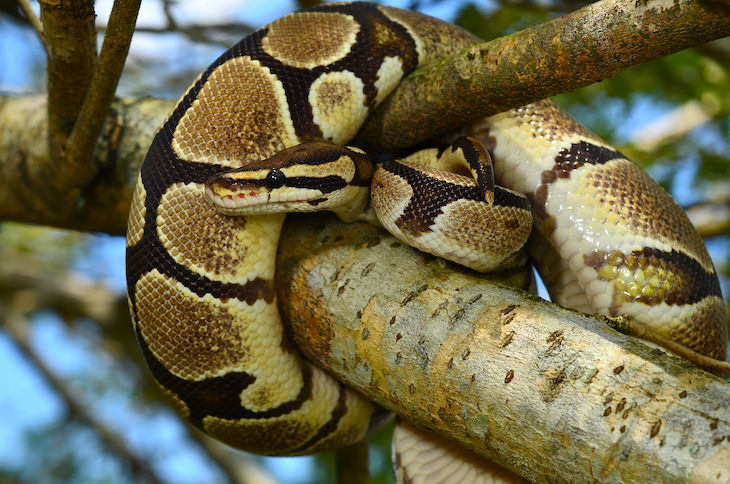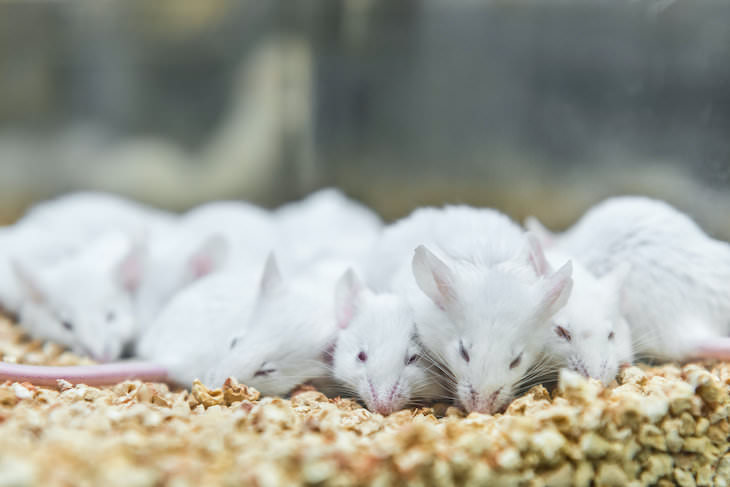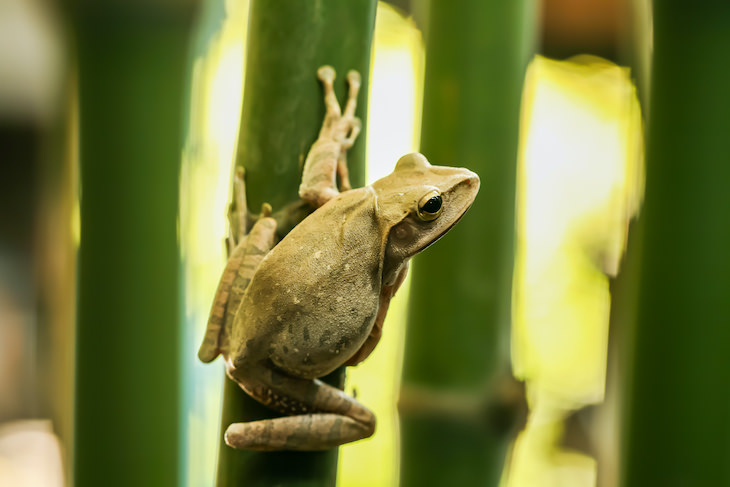
Anyone who has ever owned a pet or even just watched a nature documentary is aware of the fact animals have incredible abilities. Cats are known for their fantastic sight, sense of balance, and coordination, while dogs are able to detect smells that are completely imperceptible to humans. And those are just two examples of the vast array of astonishing abilities animals possess.
As scientists continue to research and learn about the animal world, new and fascinating abilities are discovered in different species. Many of these important findings may later be utilized in medicine or other sciences and provide the basis for novel treatments and technological innovations. Here are 6 recently discovered animal skills that are not only interesting but could also promise to be highly significant in the future.

The fact that dogs have an impeccable sense of smell is nothing new. Our furry friends’ noses are about 100 million times more sensitive than ours, according to ScienceMag. In February 2020, a study was published, revealing that dogs’ noses are even more developed than we previously thought. It turns out that they can sense weak thermal radiation, In other words, dogs have the ability to ‘smell’ heat. These findings help explain how canines with impaired sight, hearing, and sense of smell can still hunt successfully - they sense the body heat of their prey through their noses.
Most animals have naked, smooth skin on the tips of their noses around the nostrils - this area is called the rhinarium. Dogs’ rhinaria, on the other hand, are moist, colder than the ambient temperature, and super sensitive, which allows them to perceive heat. Two separate experiments suggested that a specific region in dogs’ brains is activated by the radiation of heat, even if it's weak. Researchers suspect that dogs inherited the ability from their ancestor, the gray wolf.
Related: The Astonishing Story of the Horse Who Could Do Math

It’s known that snakes are able to sidewind over sand, leap between trees, and swim by undulating underwater. Recently, scientists have recorded an entirely new way of moving characteristic for snakes. This novel ability is called ‘lasso locomotion’. As the name suggests, snakes can make their bodies form into a lasso-like loop to climb up poles.
The brown tree snake, native to Australia, Papua New Guinea, and several Pacific islands was inadvertently brought to Guam after World War 2, likely on cargo ships. The tree-dwelling reptile spread rapidly, obliterating populations of local wildlife and driving several native bird species to extinction.
In 2016, two Colorado State University ecologists - Julie Savidge and Tom Seibert - came up with an idea to solve the snake problem. They installed smooth metal poles at the base of bird nests. The snakes wouldn't be able to climb the smooth surface, and the birds would be safe out of the predators’ reach.
However, they were wrong. Video cameras placed near the experimental bird boxes caught the snakes winding their bodies around the pole, using this ‘lasso’ to push themselves upward. “We just kind of looked at each other in shock. I mean, this wasn't something a snake was supposed to be able to do,” said Seibert.

Rodents are social animals. They live in groups and depend upon each other for survival. But are they able to empathize, understand each other’s emotional experiences the way human beings do? A 2019 study claims that the answer is "yes".
The researchers positioned pairs of rats face-to-face and designated one rodent as the ‘demonstrator’ and the other one as the ‘observer’ or ‘bystander’. In each round, the demonstrator was startled by the brief application of electrical current to their front paws as the observer watched. Upon seeing the demonstrators jump, the bystanders suddenly got scared as well. “The bystander catches the fear of the demonstrator,” said the author of the study Rune Bruls. “Fear just jumps from one rat to another”.
The observer’s reaction also affected the demonstrator’s feeling about the electrical current. If the observer did not seem that scared, then neither did the demonstrator. If the observer was terrified, so was the demonstrator. Another factor that had an impact on this empathetic response was the observer's own previous experience with electrical shock. Observers unfamiliar with the experience were less likely to react strongly to a demonstrator’s plight.
Efe Soyman, one of the study’s authors, concluded: “Rats are like humans: The more our experiences match those of the people we observe, the more we can empathize with what they feel. It takes one to know one!”

Although the mutable rain-frog was discovered back in 2006 in the rainforests of Ecuador, the amphibian’s ability to alter its shape wasn’t known until very recently. Only in 2015 did the frog's shape-shifting ability become apparent.
The frog visibly changes its skin in a matter of seconds and completely changes its texture from spiny to smooth in a few minutes. This transition is so rapid that, when the first researcher captured the frog in a photograph, she thought she had mistakenly taken the wrong frog specimen. The spines had completely disappeared.
The team also identified a second frog species, the Sobetes robber frog, capable of the same shape-shifting behavior. This indicates that the phenomenon in question may be present in many other species of amphibians and is possibly just unrecorded, as it happens so quickly.
Related: The Stories of These Great Animal War Heroes Is Inspiring

Tastes are usually classified into five types: bitter, sweet, salty, sour, and umami (“umami” refers to a savory taste). In 2020, researchers discovered a set of superseding cells in the taste buds of mice that can detect four of the five main flavors. That’s a surprise because it’s commonly thought that taste cells are only capable of detecting one or two flavors.
When neuro-psychologist Debarghya Dutta Banik and his colleagues removed certain taste cells from the taste buds of mice, the remaining taste cells responded to various flavors that were introduced to them. After the mice were presented with several tasty compounds, researchers discovered that the mice had “a group of cells” capable of sensing “multiple chemicals across different classes.”
These findings are significant because they indicate that the taste buds work similarly in mice and humans. Based on this, scientists believe that the sense of taste can be restored to people who lose it as a result of chemotherapy.

Humans are not the only species that have a complex perception of time. A recent study from Northwestern University has found some of the clearest evidence yet that animals can judge time. By examining the brain's medial entorhinal cortex, the researchers discovered a previously unknown set of neurons that turn on like a clock when an animal is waiting.
To test their hypothesis, the research leader Daniel Dombeck and his team set up an experiment called the virtual "door stop" task. In the experiment, a mouse runs on a physical treadmill in a virtual reality environment. The mouse learns to run down a hallway to a door that is located about halfway down the track. After six seconds, the door opens, allowing the mouse to continue down the hallway to receive its reward.
After several training sessions, researchers made the door invisible in the virtual reality scene. In the new scenario, the mouse still knew where the now-invisible "door" was located based on the floor's changing textures. And it still waited six seconds at the "door" before running down the track to collect its reward.
When the mouse was hooked up to a brain imaging apparatus, the researchers took notice of the “new set of timing cells” being activated when the rodent reached the door. “This was a big surprise and a new discovery,” Dombeck said. One of the potential applications of his team’s research, Dombeck observed, might be new early-detection tests for Alzheimer’s.
If you found this article interesting, share it with other animal lovers!